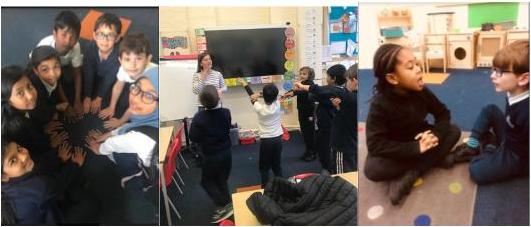
I have been leading on EAL at Kensington Primary in Newham for nine years my work involves supporting and training teachers at my school, our Academy trust, Tapscott Learning Trust, and also schools around London. EAL strategies have always been a solution for those pupils with little or no English: methods with which teachers can support pupils and ensure children with English as an additional language are being catered for in the classroom.
Schools, however, often see children who do not speak English as having something missing: a deficit approach. Labelling students as EAL can reinforce the importance of English over home languages, to the extent that even exposure to languages other than English (LOTE) is seen as detrimental. Education establishments historically have been trying to ‘fix’ this growing ‘problem’. When children join school from abroad, we assess how proficient they are in English and how quickly we can move them along in their learning. Teachers and other school staff, patiently wait until the child is finally fluent in English and can access the full curriculum at the pace at which it is taught.
The Department for Education (DfE) records a pupil as using EAL if ‘they are exposed to a language at home that is known or believed to be other than English.’1 This means that if a pupil is identified as using EAL when they start school at 3-5 years old, they will continue to be recorded as an EAL user throughout their education and their life. This includes children who have grown up speaking English primarily in the home and whose second language is the weaker language. Sounds simple- however, schools are increasingly taking in pupils from abroad who have little or no English and who may speak two other languages outside of school. Add in the mix of children with no previous education and no formal literacy in their first language (L1) and the picture gets more complicated.
Working in Newham, an East London borough with one of the highest proportion of pupils (75%) that speak languages other than (or in addition to) English at home (NALDIC, 2015). An area where the mobility rate is exceptionally high (20% per year in certain areas). How do we work at this pace with a wide range of languages, educational experiences and cultural differences? How do children access a curriculum that requires them to have the fluency of a native English speaker? And how do we support these children and families who may have limited resources and no understanding of the UK system? Most importantly, how do we emphasise the positives of our multilingual children and families rather than just seeing the challenges?
Curriculum K – An innovative curriculum that prepares children to develop the skills, characteristics and knowledge required to have successful futures – whatever path they might take.